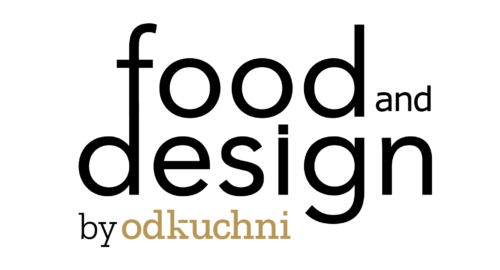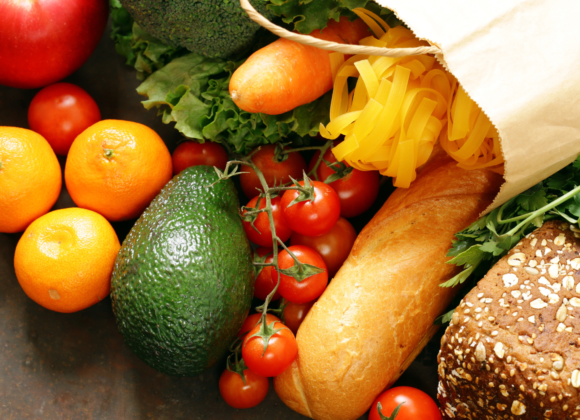Wszystkie dopuszczone do sprzedaży produkty spożywcze powinny zostać odpowiednio oznakowane. Jak zamieszczone na etykietach dane chronią klientów przed wpływami marketingowymi? Które z informacji producenci żywności mogą wykorzystać na swoją korzyść? Co musi znaleźć się na opakowaniu żywności? Poniższy artykuł przybliży Ci zasady znakowania żywności, które obowiązują na terenie Polski oraz Unii Europejskiej.
Co oznacza „znakowanie żywności” i jakie są przepisy prawne regulujące ich zamieszczanie?
Oznakowanie żywności to nic innego jak umieszczenie na opakowaniu, etykiecie lub też opakowaniu zbiorczym informacji w postaci ilustracji, znaku firmowego lub handlowego, a także opisu słownego, dotyczących nazwy, daty przydatności do spożycia, składu, wartości odżywczych produktu czy też innych aspektów handlowych.
Informacje zamieszczone na opakowaniu produktu spożywczego określone są zarówno w aktach prawa polskiego, jak i europejskiego. Są to m.in.:
- Rozporządzenie Parlamentu Europejskiego i Rady (UE) nr 1169/2011 z dnia 25 października 2011 r. w sprawie przekazywania konsumentom informacji na temat żywności;
- Ustawa z dnia 25 sierpnia 2006 r. o bezpieczeństwie żywności i żywienia (Dz.U. z 2006 r. Nr 17., poz. 1225 z późn. zm.);
- Rozporządzenie Parlamentu Europejskiego i Rady (UE) 2018/848 z dnia 30 maja 2018 r. w sprawie produkcji ekologicznej i znakowania produktów ekologicznych;
- Ustawa z dnia 21 grudnia 2000 r. o jakości handlowej artykułów rolno – spożywczych (Dz.U. Nr 5 z 2001 r., poz. 44 z późn. zm.);
- Rozporządzenie Ministra Rolnictwa i Rozwoju Wsi z dnia 10 lipca 2007r. w sprawie znakowania środków spożywczych (Dz.U. Nr 137, poz. 966 z późn. zm.);
- Rozporządzenie wykonawcze Komisji (UE) 2018/775 z dnia 28 maja 2018 r. ustanawiającym zasady stosowania art. 26 ust. 3 rozporządzenia Parlamentu Europejskiego i Rady (UE) nr 1169/2011 w sprawie przekazywania konsumentom informacji na temat żywności, w odniesieniu do reguł dotyczących wskazywania kraju lub miejsca pochodzenia podstawowego składnika środka spożywczego.
Obowiązek oznakowania produktu spożywczego spoczywa w głównej mierze na producencie, importerze i dystrybutorze, który wprowadza dany produkt do obrotu handlowego.
Jakie informacje muszą znaleźć się na etykiecie?
Zgodnie z powyższymi aktami prawnymi na każdym produkcie spożywczym dopuszczonym do obrotu muszą się znaleźć:
- nazwa identyfikująca artykuł spożywczy (marka);
- wartość odżywcza produktu, w tym wartość energetyczna, ilość tłuszczu, kwasów tłuszczowych nasyconych, węglowodanów, węglowodanów prostych, białka oraz soli;
- wykaz składników;
- składniki lub substancje, które zostały wykorzystane podczas produkcji, a mogą wywoływać alergie lub nietolerancje pokarmowe;
- zawartość netto opakowania lub liczba sztuk zapakowanych artykułów;
- warunki przechowywania lub warunki użycia produktu;
- wskazanie partii produkcyjnej;
- data minimalnej trwałości lub termin przydatności do spożycia;
- kraj lub miejsce pochodzenia produktu lub składników produktu;
- rzeczywista zawartość objętościowa alkoholu w odniesieniu do napojów o jego zawartości większej niż 1,2% objętościowo.
Tym, co producent może dodatkowo zamieścić na opakowaniu, są:
- dodatkowe składniki odżywcze: kwasy tłuszczowe jedno- i wielonienasycone alkohole, wielowodorotlenowe, skrobia, błonnik, witaminy i składniki mineralne;
- opis charakteru produktu (np. produkt ekologiczny);
- specjalne właściwości prozdrowotne (np. poprzez wzbogacenie produktu o większą zawartość wybranych składników odżywczych);
- fakultatywne elementy mające charakter reklamowy.
Co ważne, wszystkie informacje zamieszczone na opakowaniu muszą być zgodne ze stanem rzeczywistym artykułu. Nie mogą one wprowadzić konsumenta w błąd, m.in. co do charakteru produktu, jego składu, wielkości, trwałości, metod wytwarzania lub produkcji czy kraju pochodzenia. Niedozwolone jest także przypisywanie środkowi spożywczemu działania lub właściwości, których on nie posiada.
Wszystkie powyższe zasady ugruntowane są nie tylko w prawie żywnościowym, ale także w regulacjach, które dotyczą zwalczania nieuczciwej konkurencji.
System znakowania GDA
GDA – czyli wskazane dzienne spożycie – jest wartością referencyjną poziomu spożycia poszczególnych składników odżywczych w codziennej diecie osoby dorosłej i zdrowej. Zgodnie z nowymi wymaganiami znakowania żywności GDA określane jest jako RWS, czyli Referencyjne Wartości Spożycia.
Jaka korzyść płynie z tego rodzaju informacji? Oznaczenie RWS (wyrażone w procentach) podpowiada nam, jaką ilość wybranego produktu powinniśmy spożyć, by zapewnić organizmowi odpowiednią podaż wszystkich składników odżywczych. Informuje nas też o tym, że niektóre produkty nie powinny być spożywane w nadmiernych ilościach, ponieważ mogą stać się źródłem składników niekorzystnie wpływających na zdrowie (mowa tu np. o soli czy nasyconych kwasach tłuszczowych). Zamieszczenie informacji RWS jest zatem nie tylko informacją, ale także sposobem edukacji konsumentów co do składu i wartości wybranych produktów.
Warto jednak zaznaczyć, że wartości te są uogólnione dla osoby dorosłej, zdrowej, spożywającej średnio 2000 kcal na dobę. Nie uwzględniają one żadnych indywidualnych czynników, które mogą wpłynąć na zapotrzebowanie organizmu. Nie jest to zatem idealna koncepcja, ale umożliwia odniesienie się do pewnego wzorca, na podstawie którego wiemy, jak dobrać odpowiednie artykuły spożywcze.
Zasady znakowania żywności ekologicznej
Zasady znakowania żywności ekologicznej reguluje Rozporządzenie Rady (EWG) 2092/91 z dnia 24 czerwca 1991 r. w sprawie produkcji ekologicznej produktów rolnych oraz znakowania produktów rolnych i środków spożywczych. Zgodnie z nim zamieszczanie słów „eko”, „eco”, „organic” czy też „bio” jest zarezerwowane wyłącznie dla żywności pochodzącej z rolnictwa ekologicznego.
Dzięki Rozporządzeniu Parlamentu Europejskiego i Rady (UE) 2018/848 w sprawie produkcji ekologicznej i znakowania produktów ekologicznych zasady dotyczące oznakowania produktów ekologicznych zostały zaostrzone. Produkty ekologiczne muszą składać się głównie (w ponad 50%) ze składników pochodzenia rolniczego (jednak z wykluczeniem wody i soli), a także 95% składników pochodzenia rolniczego musi pochodzić z rolnictwa ekologicznego.
Warto również zwrócić uwagę, że producenci żywności często starają się użyć pewnych haseł reklamowych, opisując produkt jako „naturalny”, „prosto z natury” itp. Należy pamiętać, że tego rodzaju sformułowania są jedynie środkiem marketingowym i nie świadczą o pochodzeniu produktu. Tylko i wyłącznie wcześniej wymienione oznaczenia zapewniają, że zakupiony produkt ma charakter ekologiczny i pochodzi z certyfikowanego gospodarstwa ekologicznego.
Z drugiej strony, jeżeli gospodarstwo spełnia wszelkiego rodzaju normy i otrzymało odpowiednie certyfikaty zapewniające o zgodności produkcji żywności z przyjętymi normami rolnictwa ekologicznego, producent może (lecz nie musi) zamieścić tego rodzaju informację na opakowaniu. Jest to bardzo dobry sposób reklamowania produktu, umożliwiający wyróżnienie go na tle innych, konkurencyjnych artykułów.
Jak wygląda nadzór i kontrola znakowania żywności?
Znajdujące się w obrocie środki spożywcze są kontrolowane przez Inspekcję Handlową Artykułów Rolno-Spożywczych (w skrócie: IHARS). Jednostka ta kontroluje zarówno jakość handlową, jak i prawidłowość znakowania produktu. Kontrolę tę sprawuje w hurtowniach oraz w sprzedaży detalicznej.
W trakcie kontroli jakość żywności jest sprawdzana organoleptycznie oraz laboratoryjnie. Dzięki temu możliwa jest faktyczna ocena zgodności parametrów z tymi deklarowanymi przez producentów na etykiecie. Przede wszystkim sprawdzane jest to, czy zamieszczone na etykiecie informacje spełniają wymagania obowiązujących norm.
W przypadku stwierdzenia nieprawidłowości IHARS może:
- zakazać wprowadzenia do obrotu artykułu niespełniającego wymagań jakościowych, transportowych czy przechowywania,
- nakazać wprowadzenie stosownych zabiegów i korekt,
- zakazać składowania artykułów w nieodpowiednich warunkach czy też transportu w nieodpowiednich środkach transportu,
- nakazać zniszczenie artykułu.
A co w przypadku, kiedy to konsument zauważył nieprawidłowości w oznakowaniu produktu, bądź też informacje na etykiecie nie są zrozumiałe? W tej sytuacji sprawę należy zgłosić do Urzędu Ochrony Konkurencji i Konsumentów.
Dlaczego odpowiednie znakowanie żywności jest takie ważne?
Prawidłowe znakowanie żywności stanowi przede wszystkim ochronę interesów konsumenta – dzięki niemu jest on w stanie podjąć świadomą decyzję co do wyboru zakupionego produktu. Ma to znaczenie nie tylko ze względów marketingowych. Zamieszczenie odpowiednich informacji na etykiecie zapewnia bezpieczeństwo produktu spożywczego, w tym jego jakości zdrowotnej, wartości odżywczej i sensorycznej.
Prawidłowe oznakowanie artykułów spożywczych jest więc bardzo istotne – zwłaszcza dla osób, które przykładają uwagę do prawidłowego sposobu odżywiania, czy dla tych, którzy z przyczyn zdrowotnych muszą unikać pewnych składników i środków spożywczych.
Etykiety są najważniejszym źródłem informacji o żywności; stanowią też formę reklamy. Zamieszczony na nich komunikat musi być jasny, czytelny oraz łatwy do zrozumienia przez przeciętnego konsumenta. Co najważniejsze: etykiety nie mogą wprowadzać w błąd. W końcu to dzięki nim możemy świadomie podejmować decyzje i mieć pewność, że zakupiony produkt jest zgodny z tym, co deklaruje producent.
Bibliografia:
- https://www.gov.pl/web/wsse-katowice/znakowanie
- https://www.gov.pl/web/gis/podstawowe-wymagania-dotyczace-znakowania-zywnosci
- Dziennik Urzędowy Unii Europejskiej(2011). Pobrano 10.11.2022 z https://eur-lex.europa.eu/legal-content/PL/TXT/PDF/?uri=CELEX:32011R1169
- Kowalska, A., & Kowalski, J. (2020). Znakowanie żywności wolnej od GMO w polskim systemie prawa żywnościowego. Ruch Prawniczy, Ekonomiczny i Socjologiczny, 82(2), 213–228.
- Rozporządzenie Parlamentu Europejskiego I Rady (UE) 2018/848 z dnia 30 maja 2018 r. w sprawie produkcji ekologicznej i znakowania produktów ekologicznych i uchylające rozporządzenie Rady (WE) nr 834/2007 wraz z późn. zm.
- Sałata B. 2015. Wymagania w zakresie znakowania produktów spożywczych. Centrum Doradztwa Rolniczego w Brwinowie Oddział w Radomiu 2015 ISBN 978-83-63411-52-7: 5–11, 13
- Wojciechowski, P. (2021). Znakowanie żywności jako instrument realizacji celów prawa żywnościowego–wybrane problemy. Przegląd Prawa Rolnego, (2 (29), 509–529.










 Młodszy specjalista ds. komunikacji marketingowej i PR.
Młodszy specjalista ds. komunikacji marketingowej i PR.


 Absolwent Uniwersytetu Warszawskiego oraz Szkoły Głównej Gospodarstwa Wiejskiego. W branży HoReCa od ponad 10 lat. Przez lata związany z Grupą Trip, Sobienie Królewskie Golf and Country Club oraz restauracją Florentin w Warszawe.
Absolwent Uniwersytetu Warszawskiego oraz Szkoły Głównej Gospodarstwa Wiejskiego. W branży HoReCa od ponad 10 lat. Przez lata związany z Grupą Trip, Sobienie Królewskie Golf and Country Club oraz restauracją Florentin w Warszawe. Absolwentka Wydziału Architektury Politechniki Warszawskiej na kierunku Architecture for Society of Knowledge oraz Komunikacji Wizualnej na Politecnico di Milano. Specjalistka od budowania nastroju. Doświadczenie zdobywała w kraju i zagranicą podczas licznych warsztatów międzynarodowych (Sevilla, Lizbona, Florencja), stypendium na La Sapienza (Rzym) oraz pracując m.in. w Carmi e Ubertis i ADM Milano.
Absolwentka Wydziału Architektury Politechniki Warszawskiej na kierunku Architecture for Society of Knowledge oraz Komunikacji Wizualnej na Politecnico di Milano. Specjalistka od budowania nastroju. Doświadczenie zdobywała w kraju i zagranicą podczas licznych warsztatów międzynarodowych (Sevilla, Lizbona, Florencja), stypendium na La Sapienza (Rzym) oraz pracując m.in. w Carmi e Ubertis i ADM Milano.








 Menedżer z wieloletnim doświadczeniem w branżach kosmetycznej, spożywczej, dziecięcej. W trakcie swojej kariery związany z firmami takimi jak: L’Oreal, Samsung, Danone-Nutricia, Unilever. W ciągu swojego życia zawodowego odpowiadał między innymi za rozwój sprzedaży i contentu eCommerce w Polsce i krajach Europy Środkowo-Wschodniej.
Menedżer z wieloletnim doświadczeniem w branżach kosmetycznej, spożywczej, dziecięcej. W trakcie swojej kariery związany z firmami takimi jak: L’Oreal, Samsung, Danone-Nutricia, Unilever. W ciągu swojego życia zawodowego odpowiadał między innymi za rozwój sprzedaży i contentu eCommerce w Polsce i krajach Europy Środkowo-Wschodniej. 

























































